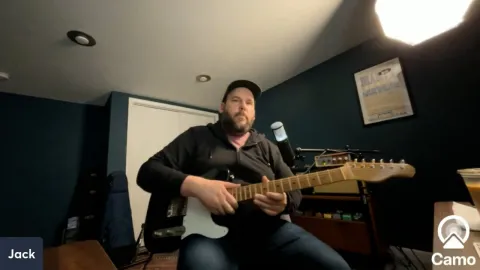In this masterclass, Jack Ruch delves into the nuances of playing minor blues guitar, expanding on previous discussions about blues phrasing. He introduces a new backing track with a different groove, aiming to explore minor blues in detail. Jack emphasizes the rhythmic aspects of blues phrasing and how the groove and tempo significantly influence one's phrasing choices. He mentions the importance of understanding the groove to dictate phrasing, highlighting the difference between a shuffle and a straight feel, and uses "The Thrill is Gone" as a reference point for the session's groove. The masterclass begins with an exploration of B minor and revisits some common phrasing techniques discussed in previous lessons, with a promise to introduce new harmonic concepts.
Throughout the video, Jack focuses on pushing the harmonic boundaries within blues progression, linking blues closely with jazz and discussing how to innovate within simple chord progressions. He explains the significance of chord tones over scales, demonstrating how understanding intervals and arpeggio shapes can enhance improvisation. Jack skillfully demonstrates playing over a minor blues progression in B minor, using a blend of minor pentatonic scales, chord tones, and arpeggios. He provides practical examples of how to apply these concepts over different parts of the progression, emphasizing the importance of resolution and tension in creating impactful phrases.
As the masterclass progresses, Jack introduces the concept of using diminished scales and arpeggios to create tension and resolution, particularly over dominant chords leading back to the tonic. He explains how these concepts can be superimposed on chord progressions to enrich one's playing with more sophisticated sounds. Jack breaks down the theory behind these techniques, offering clear examples and resolving patterns that highlight the utility of diminished arpeggios in improvisation. The masterclass concludes with Jack encouraging viewers to practice simple phrasing with intent, using backing tracks to hone their skills, and promising to delve deeper into these advanced concepts in future sessions.

